





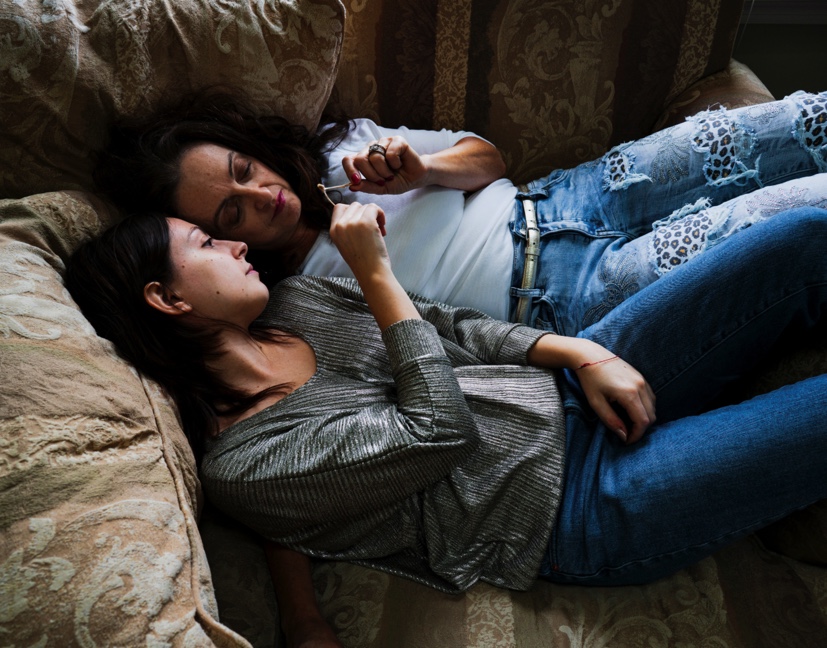
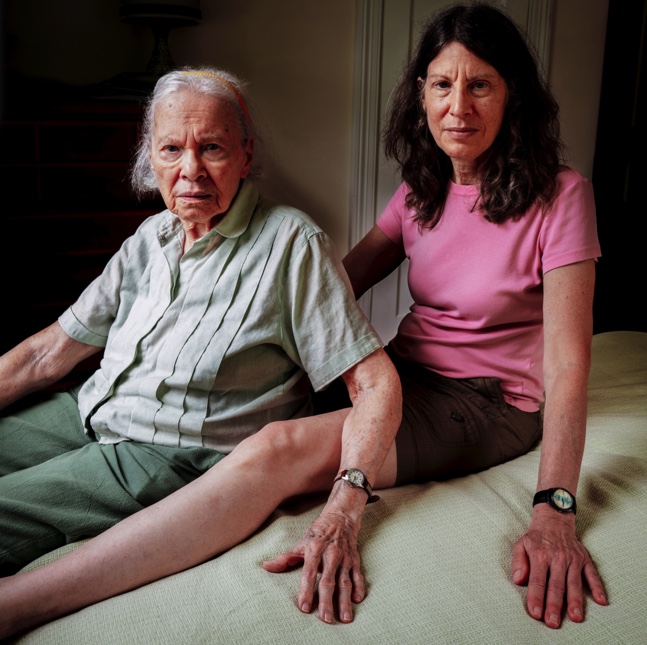
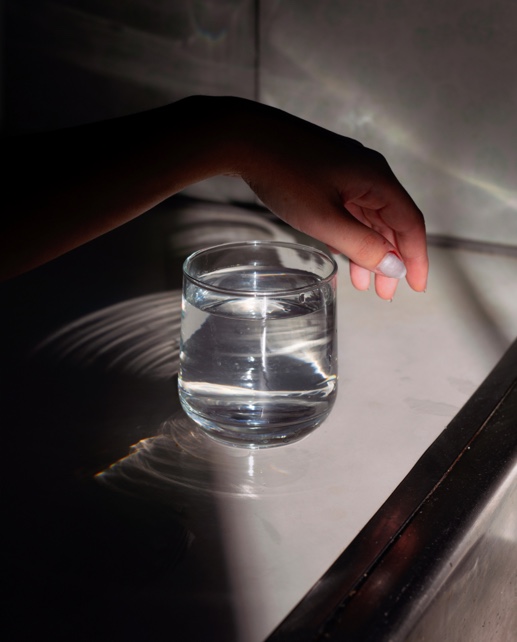

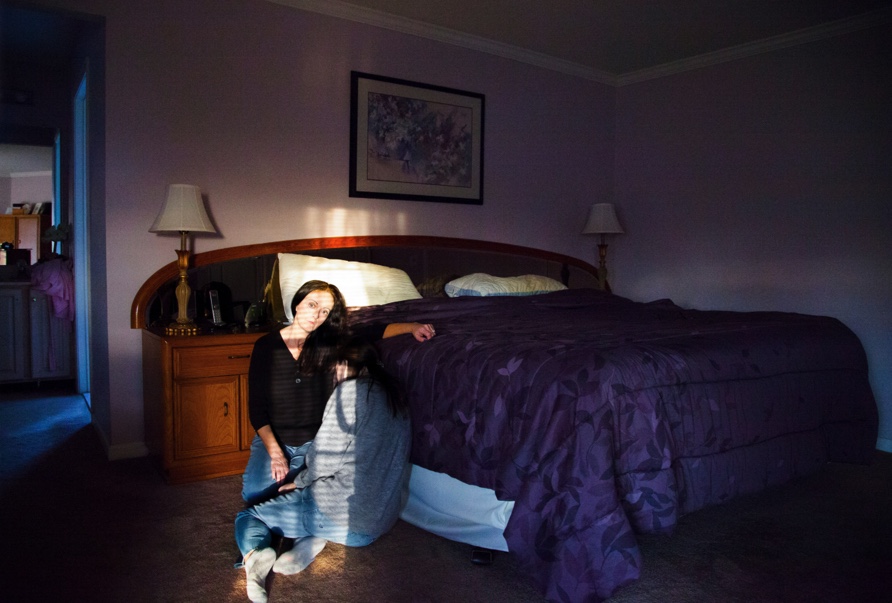
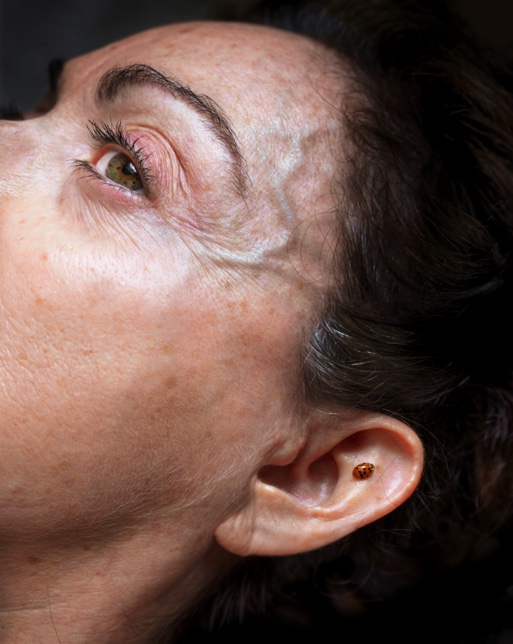
Hannah Altman is a Jewish-American artist from New Jersey. She holds an MFA from Virginia Commonwealth University. Her photographs portray lineage, folklore, memory, and narrative. She has recently exhibited with the Virginia Museum of Contemporary Art, Blue Sky Gallery, Filter Photo, and Athens Photo Festival. Her work has been featured in publications including Vanity Fair, Artforum, Huffington Post, and British Journal of Photography. She received the Lensculture Critics’ Choice Award 2021 and the Portraits Hellerau Photography Award 1st Prize 2022. Her photobook Kavana (2020), published by Kris Graves Projects, is in the permanent collections of the MoMa Library and the Metropolitan Museum of Art Thomas J Watson Library. She is the Yale University 2022-23 Blanksteen Artist in Residence at the Slifka Center.
Indoor Voices
By engaging with imagery over the last five years, Altman and her mother have been building Indoor Voices around intergenerational womanhood, matrilineal responsibility, and the symbolism in quiet intimacy. The work is a collaborative discourse of familial and female oriented complexities that makes a testimony to our lineage and experiences as Jewish women. The images explore the process of making by women responsible for their own modes of storytelling. As the project continues, they have constructed more narratives to the mundane and to their lives.
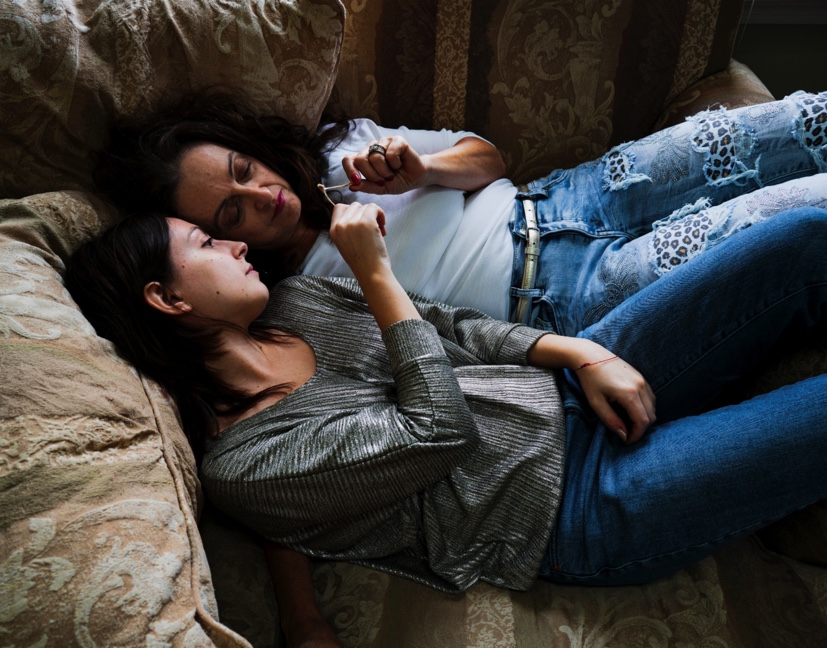
The images are made with consideration to Jewish folklore narrative structures and matrilineal gender performance. As with such stories, they exist uneasily between the realm of truth and the sentimental. As with femininity, aspects of the work are carefully choreographed and orchestrated. This intricate dynamic between the portrayed and the portrayal are central interests for the project. Within every image, and in the relationships between images, there are structures and collapses, strengths and ruins, transformation and stagnancy.
“I think that the certitude of the relationship between my mother and me exists in this overlapping, intangible space, and with this constant assembling and revising, our memory builds in front of us as we photograph it.”
Hannah Altman on “Indoor Voices”
Kavana
The conceptual coupling of photography and memory reaches far back into the medium’s history and how critics, especially Susan Sontag, have thought about photography. Hannah Altman’s book, Kavana, visualizes and affixes the ordinary yet fleeting human phenomena of memory. Focusing specifically on the Jewish understanding of cultural and shared memory, Altman photographed family, traditions, and others as they practiced and participated in Judaism. In Altman’s photographs we see a personalized understanding of memory showcased in her self portraits. The tangible or physical implications of memory can harkened, like the memory of a cut foot being washed in the water.
Portraiture is a critical component in this book, and Altman photographed generations of people. In her artist statement she writes “…when my hand is wounded, I remember other hands. I trace ache back to other aches.” The power of generational memory, such as this, is how it goes deeper than one individual’s life and experience. Altman’s family is here today because of her great grandfather and grandmother’s flight from ethnic cleansing in Poland during the 1930’s. Those in the family who stayed in Poland were murdered in Nazi concentration camps. When Altman photographs personal, familial, or generational memory it moves memory out of the fuzziness associated with the past and into the tangible and consequential reality of the real world. The physical implications of memory loom large in Kavana. Generational memory means that people pass their memories onward and carry them on their skin, in the bones, and within stories.

Symbols and metaphors are a through-line in Kavana. When asked about her work, Altman cites an appreciation for the “misleading simplicity” used to teach complex Jewish ideas in children’s storybooks. The photographs clearly depict actions as they happen before the camera. The photographs do not coldly illustrate a process from a distance. They are thoughtfully lit, composed, and photographed to place the viewer in the room, at the baptismal, and in the doorway with the subjects.
Altman’s photographs show objects and gestures, but leave the viewer with questions.
Altman writes, “To approach an image in this way is not only to ask what it looks like but asks: what does it remember like?” Photographing cultural and generational memory, along with its religious ties presents opportunities for metaphor and symbolism.
Hannah Altman on “Kavana”
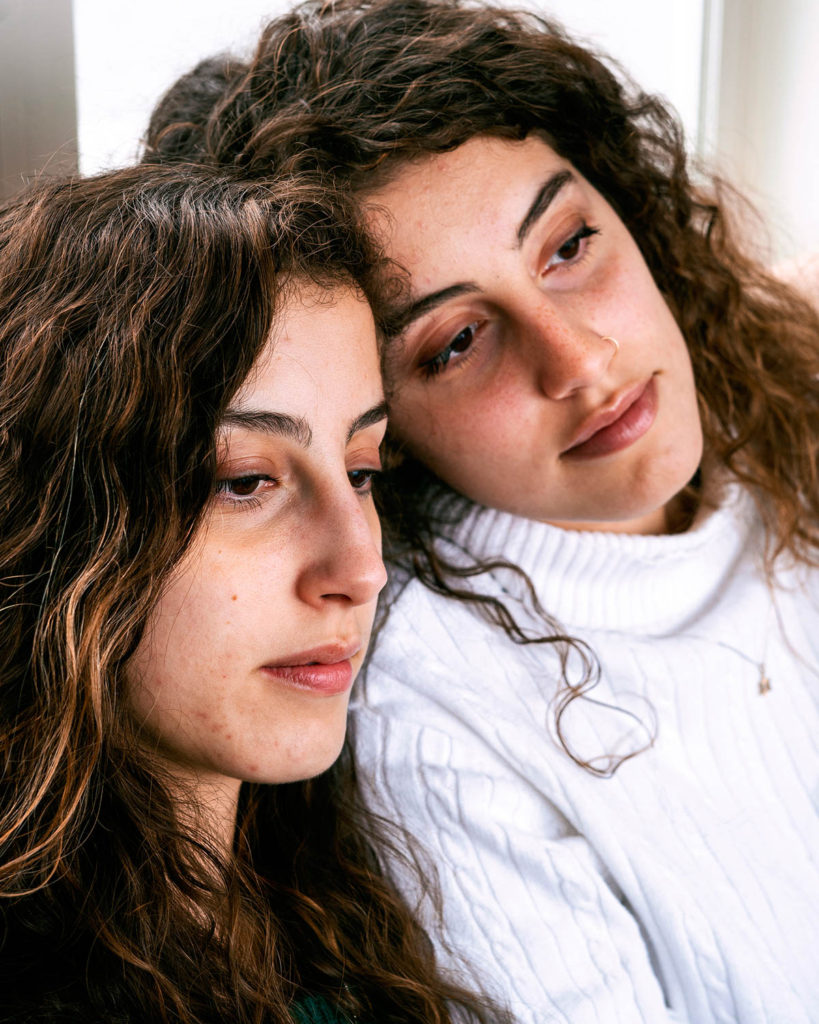
Symbols and metaphors are a through-line in Kavana. When asked about her work, Altman cites an appreciation for the “misleading simplicity” used to teach complex Jewish ideas in children’s storybooks. The photographs clearly depict actions as they happen before the camera. The photographs do not coldly illustrate a process from a distance. They are thoughtfully lit, composed, and photographed to place the viewer in the room, at the baptismal, and in the doorway with the subjects. Dipping hands in honey, spitting on an insect, melting candles onto hands, are all scenes clearly rendered by the photographer, though they’re still shrouded in mystery. Why are these actions being undertaken? What do they mean, if anything? Altman’s photographs show objects and gestures, but leave the viewer with questions. The tension between a photograph’s precision and ambiguity was succinctly described decades ago by photography curator and critic John Szarkowski, who wrote, “a photograph describes everything but explains nothing.” This is a major attribute of photography, and it’s the central tension that draws many artists to the medium, including Hannah Altman.
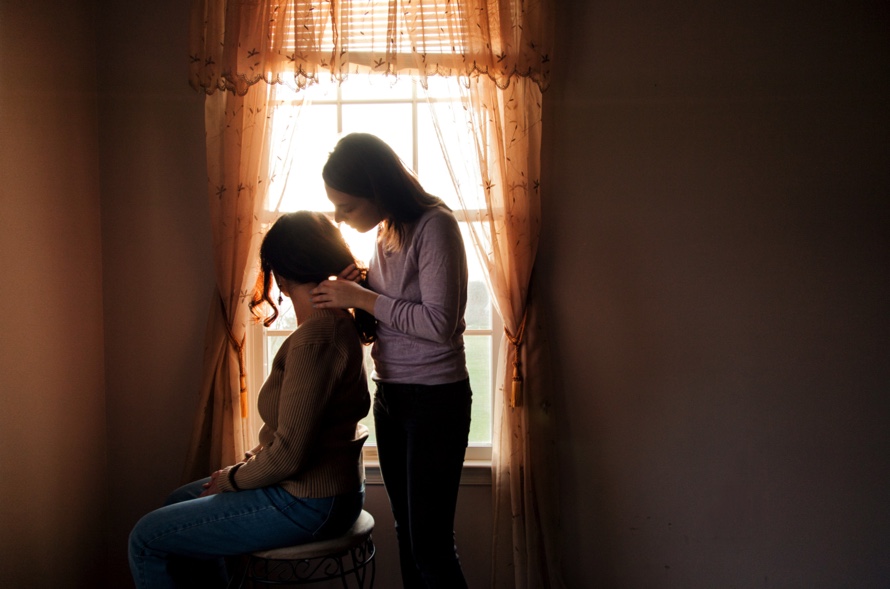
This image is from Hannah Altman’s “Indoor Voices” collection. The tones in this image are warm, with deep orange and brown tones coming from the wall, forming into lighter orange and white tones with the light streaming in from the window slightly to the left. The image clearly uses the rule of thirds – the left third of the image pretty clearly separates the window, creating a blank area of the image to the right. This blank space, to me, was constructed by Altman, and could signify a missing part to their relationship or in their home, and also suggests a particular atmosphere of tranquility or stillness. The middle third features the main focal point, slightly off centre: the two subjects: Hannah Altman herself, and her mother. The fact that the focal point of this image is off centre could connote an unique relationship between the pair, or an unconventional part – this can also be seen by the way the two subjects are posed: Altman, the daughter, stands above her mother in a stereotypical ‘matriarchal’ position, brushing her hair. Her mother sits below, in the place of what would be the child. This reversal of stereotypical ‘mother daughter’ activities creates a unique context in this image, in that of the portrayal of women historically, and the male gaze – historically, the mother is seen to be the caretaker of the child, and has been portrayed in the media for centuries. The way that Hannah Altman creates a reversal of these traditional in these rules creates a unique and important photograph, which speaks to the ‘female gaze’, rather than the historically sexist and male focused portrayal of a traditional family and mother daughter relationship.
This photograph and Hannah Altman’s works are central to my project due to her unconventional portrayal and representation of family relationships between women. This relates closely to my subjects and own life – the context of Altman’s work aligns to what I’m trying to achieve in my project – the identity between generations of women, from their own perspectives.
